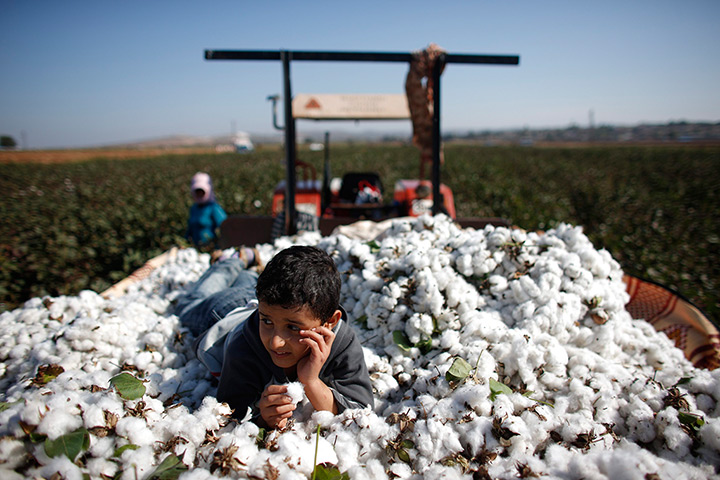Introductory remarks
According to the Turkish Statistics Institute, the number of people actively engaged in agriculture, presently varies between 23-26 % of the total labour force. Approximately, 4 million farm units operate in the agricultural sector with an average farm size of around 4 ha. However, the share of agriculture in Turkish GDP has progressively decreased due to significant increases in industrial production, construction and services sectors, leaving agriculture with a share of just 8 % . The most important agricultural commodities are cereals, oil seeds, table olives, olive oil, cotton, tobacco, various types of dried fruit, hazelnuts, as well as various types of vegetables. Cotton, which is one of the basic agricultural income sources for many farmers in Turkey, has also gained increased importance, especially following the significant expansion of country’s textiles and clothing industries.
Cotton’s contribution to food and fiber industries is still significant. Cotton seed oil is mainly used to cover part of the domestic deficiency for vegetable oils, for which there is constantly a growing demand, which can only be satisfied by imports at increased amounts. These imports are mainly as sunflower seed oil, soya oil and partly palm oil, for which Turkey has a significant demand.
With a lint cotton production of about 900 thousand tons, until a few years ago, Turkey used to be ranked as the sixth largest cotton producing country in the world, after China, India, the USA, Pakistan and Uzbekistan. However, Australia and, particularly Brazil, have significantly surpassed Turkey in cotton production, pushing the country to the 8th position in 2016/2017 season. However, in 2017/18 season Turkey again ranked as the sixth largest cotton producing country surpassing Uzbekistan and Australia. Although, researches have not been finished yet in 2018/19 season, it is expected that Turkey will rank 6 th position in 2018/19 season after India, China, United States, Brazil and Pakistan.
With the gradual development of the textile and clothing sectors during the last three decades, cotton has become important to the industrial sector as well as to the internal and external trade of Turkey. Turkey saw approximately 25% increase to nearly 1 million tonnes production in 2018/19 season. Thanks to production increase, the cotton import of Turkey decreased %11 and reached to 793 thousand tonnes. Since, it is expected that the domestic cotton production of Turkey will remain at the same level comparing previous season and cotton demand of Turkey mills will remain at the same level comparing previous season it is estimated that the cotton import of Turkey will be ranked as the 4th positions. Currently, the Turkish textile and clothing sector covers just below approximately one fifth of total export earnings (See Table 2).
Global financial crisis, which had erupted in mid-2008, had made itself felt in many sectors, especially in manufacturing, as well as in domestic and export marketing of textiles and clothing sub-sectors, causing consumption of cotton drop significantly. Thanks to the gradual increases in cotton prices, especially witnessed soon after October 2009, together with increased demand for textile products, which ultimately triggered price increases on cotton. This trend continued even more fiercely as we entered the 2010/11 season, which will be remembered as one in which cotton prices had shot upwards, the Cotlook A Index reaching its apex value of 241 US cent/lb in March 2011.
2018/19 season started with rising prices and ended with falling prices. Turkey cotton prices continues to downward trend similar to Cotlook A Index.
Πηγή: ICAC Australia 2019

